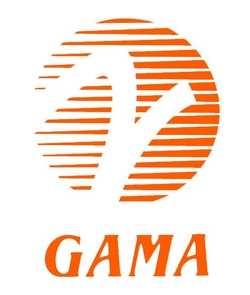Associations Say Development Shows FAA Is Making Progress Towards Drop-In Replacement Fuel
GAMA and EAA have noted the FAA’s announcement that it has selected two unleaded aviation fuels, developed by Shell and Swift Fuels, for Phase 2 full-scale testing in engines and aircraft. The selection is based on the least impact to the existing fleet following the results of rigorous Phase 1 laboratory and rig testing of fuel properties and compatibility with aircraft materials and components, as well as an assessment of predicted costs and environmental factors.

Testing of the fuels will begin this summer at the FAA’s William J. Hughes Technical Center in Atlantic City, NJ, and be supported by engine and aircraft manufacturers and commercial operators. The full-scale engine and aircraft testing is expected to conclude in 2018. Test results will be the basis for the FAA to issue a fleet-wide authorization for general aviation aircraft that can use the fuels and support the development of an ASTM International Production Specification for commercialization.
Enabling the development and deployment of a replacement unleaded avgas is being led by the Piston Aviation Fuels Initiative (PAFI), a government-industry program. PAFI’s Steering Group includes the FAA, GAMA, the Aircraft Owners and Pilots Association, the American Petroleum Institute, the Experimental Aircraft Association, the National Air Transportation Association, and the National Business Aviation Association. The U.S. Congress approved nearly $7 million—$1 million more than President Obama’s budget request—for PAFI in Fiscal Year (FY) 2016 funding, and GAMA, along with other aviation associations, has requested additional funding for FY 2017.
“The selection of these two fuels shows the FAA is making continued progress toward the goal of identifying a viable unleaded aviation gasoline option for general aviation operators by 2018,” GAMA President and CEO Pete Bunce said. “This is critical to the future of general aviation. A successful transition from leaded to unleaded avgas will mean the continued safety and utility of the fleet, a reduced environmental impact, and lower economic transition costs for our industry. We applaud the FAA for its leadership on this effort and also appreciate Congress’ strong support in funding PAFI to ensure the future of general aviation.”
The unleaded avgas selection process began in 2013, when the FAA requested that fuel producers submit replacement fuel proposals for evaluation, based on their impact on the existing fleet, production and distribution infrastructure, environmental and toxicological effects, and anticipated cost of aircraft operations. Seventeen formulations from six companies were submitted by July 2014, and the agency selected four fuel formations that September for Phase I testing.

“This is an important first step in the ongoing effort to find a technically and economically viable high-octane unleaded fuel for aviation, a step made possible by the dedicated work of people throughout the FAA, and the aviation and fuel industries,” said Jack Pelton, EAA CEO and chairman. “EAA is committed to this process, which focuses on thorough evaluation and testing to bring forth the best solution to a vastly complicated technical and economic challenge. The long-term viability of the existing GA fleet and future of the marketplace depends on the success of this program. EAA will continue to invest heavily in advancing this effort to its best possible conclusion.”
Approximately 167,000 aircraft in the United States and a total of 230,000 aircraft worldwide rely primarily on 100 low-lead avgas to operate safely. It is the only remaining transportation fuel in the United States that contains added tetraethyl lead (TEL) needed to create the high octane levels required by high-performance aircraft engines. Operations with inadequate octane can result in engine failure.
(Source: GAMA, EAA news releases. Image from file)
 NTSB Final Report: Aviat A1
NTSB Final Report: Aviat A1 ANN's Daily Aero-Linx (07.08.25)
ANN's Daily Aero-Linx (07.08.25) Classic Aero-TV: Fly Corvairs Reliable Engine Alternative
Classic Aero-TV: Fly Corvairs Reliable Engine Alternative ANN FAQ: Contributing To Aero-TV
ANN FAQ: Contributing To Aero-TV Classic Aero-TV: CiES Fuel-Quantity and e-Throttle Systems Praised
Classic Aero-TV: CiES Fuel-Quantity and e-Throttle Systems Praised




